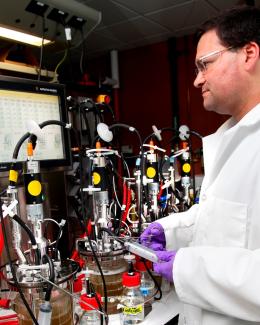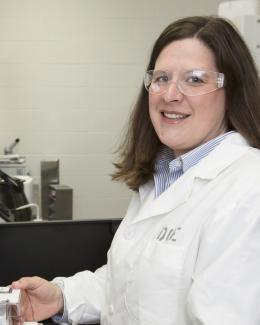Abstract
Background
The thermophilic anaerobe Clostridium thermocellum is a candidate consolidated
bioprocessing (CBP) biocatalyst for cellulosic ethanol production. The aim of this study was
to investigate C. thermocellum genes required to ferment biomass substrates and to conduct a
robust comparison of DNA microarray and RNA sequencing (RNA-seq) analytical platforms.
Results
C. thermocellum ATCC 27405 fermentations were conducted with a 5 g/L solid substrate
loading of either pretreated switchgrass or Populus. Quantitative saccharification and
inductively coupled plasma emission spectroscopy (ICP-ES) for elemental analysis revealed
composition differences between biomass substrates, which may have influenced growth and
transcriptomic profiles. High quality RNA was prepared for C. thermocellum grown on solid
substrates and transcriptome profiles were obtained for two time points during active growth
(12 hours and 37 hours postinoculation). A comparison of two transcriptomic analytical
techniques, microarray and RNA-seq, was performed and the data analyzed for statistical
significance. Large expression differences for cellulosomal genes were not observed. We
updated gene predictions for the strain and a small novel gene, Cthe_3383, with a putative
AgrD peptide quorum sensing function was among the most highly expressed genes. RNAseq
data also supported different small regulatory RNA predictions over others. The DNA
microarray gave a greater number (2,351) of significant genes relative to RNA-seq (280
genes when normalized by the kernel density mean of M component (KDMM) method) in an
analysis of variance (ANOVA) testing method with a 5 % false discovery rate (FDR). When
a 2-fold difference in expression threshold was applied, 73 genes were significantly
differentially expressed in common between the two techniques. Sulfate and phosphate
uptake/utilization genes, along with genes for a putative efflux pump system were some of
the most differentially regulated transcripts when profiles for C. thermocellum grown on
either pretreated switchgrass or Populus were compared.
Conclusions
Our results suggest that a high degree of agreement in differential gene expression
measurements between transcriptomic platforms is possible, but choosing an appropriate
normalization regime is essential.




